Living History: Connecting to Heritage, Part I
 In a recent post, I posed a question that is central to this series: why is living history important? My initial answer dealt with the need to communicate the facts and concepts of history to those persons who have not previously connected with the past in a meaningful way. Knowing the history of one’s community, nation, and the world not only informs how we view those entities, but also impacts who we are as individuals and how we function within those entities. I strongly believe that individuals and nations cannot know where they are going unless they know where they have been. As the philosopher George Santayana so eloquently put it, “Those who cannot remember the past are condemned to repeat it.”
In a recent post, I posed a question that is central to this series: why is living history important? My initial answer dealt with the need to communicate the facts and concepts of history to those persons who have not previously connected with the past in a meaningful way. Knowing the history of one’s community, nation, and the world not only informs how we view those entities, but also impacts who we are as individuals and how we function within those entities. I strongly believe that individuals and nations cannot know where they are going unless they know where they have been. As the philosopher George Santayana so eloquently put it, “Those who cannot remember the past are condemned to repeat it.”
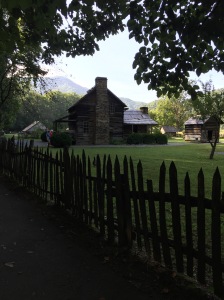 And then, of course, there is always the entertainment factor associated with living history events and attractions. They are great fun. They allow us to step back in time without the inconvenience of having to deal with the realities of historical living conditions. They allow us to witness or experience battles without loss of life or limb. They offer snapshots of who we once were. For some persons, though, they offer something much more important. Living history offers a connection to personal heritage.
And then, of course, there is always the entertainment factor associated with living history events and attractions. They are great fun. They allow us to step back in time without the inconvenience of having to deal with the realities of historical living conditions. They allow us to witness or experience battles without loss of life or limb. They offer snapshots of who we once were. For some persons, though, they offer something much more important. Living history offers a connection to personal heritage.
In August of this year, my husband and I traveled into the mountains of Georgia and North Carolina, as we do most years, for a respite from the oppressive heat of summer in the American South. Although I didn’t grow up in the mountains, they have always called to me. They have always felt like home. Perhaps it is that my parents grew up in the foothills of the Appalachians in northern Georgia or that my fondest childhood memories center around family vacations in the Great Smokies and at my grandparents’ homes. Both sides of my family have lived in Cherokee County and Hall County, Georgia since the late 18th/early 19th centuries, and according to a deeply held family secret in my mother’s family, maybe much, much longer. Like many families whose roots are deep in the soil of the mountain South, my mother’s family is rumored to have Cherokee ancestry. I say rumored, because any proof of Native American heritage was buried long ago. Had it not been for my mother and her older sister, even the rumor would have been lost, for they alone of my grandparents’ five children seemed to know the story.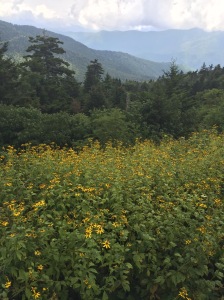
I have a theory, that I will never be able to prove, regarding the reason behind all the secrecy. Most Americans have at least some knowledge of the Trail of Tears, subject of Becky Lower’s earlier post (here). What many are not aware of is just how assimilated into Anglo culture the Cherokee of northern Georgia were. Intermarriage was so common that many long-standing families in the region have at least some Native American ancestry. The Cherokee adopted Anglo ways and lived in homes indistinguishable from those of their Anglo neighbors. For example, in 1804, Chief James Vann built a lovely 2 1/2 story red brick Federal style home at Chatsworth, Georgia, a mansion by the standards of the

Chief Vann House
day, and lived his life as one of the wealthiest men in the Western Hemisphere (subject for a later post).[1] While there was an acknowledged prejudice against Native Americans, the ties between the Cherokee and many of their Anglo neighbors were strong, deeply interwoven, and common knowledge among the populous. The Cherokee and their Anglo neighbors for the most part lived in harmony and in an increasingly blended society. Then gold was discovered at Dahlonega. Greed ultimately determined the fate of Georgia’s Cherokee Nation.
 By presidential decree, Federal troops were sent in 1838 to round up and remove the Cherokee and other tribes from their ancestral lands in Georgia. All persons openly claiming Cherokee heritage or “living as an Indian” were driven from their homes at bayonet point, moved to stockades, and finally force marched to what was then the Oklahoma Territory. In some cases, families were torn apart. One particularly poignant story from my father’s home town tells of how Waleska, Georgia got its name. White settlers began trickling into the mountains 60 miles or so north of what would become Atlanta during the 1820’s-early 1830’s. An early settler, Lewis E. Reinhardt, became friends with the local Cherokee chief. When the Trail of Tears began, the chief gave the keys to his house to Reinhardt, telling him that he would probably never come home again. Reinhardt then named the small community for the chief’s daughter, Warluskee, or Waleska as it is known today.
By presidential decree, Federal troops were sent in 1838 to round up and remove the Cherokee and other tribes from their ancestral lands in Georgia. All persons openly claiming Cherokee heritage or “living as an Indian” were driven from their homes at bayonet point, moved to stockades, and finally force marched to what was then the Oklahoma Territory. In some cases, families were torn apart. One particularly poignant story from my father’s home town tells of how Waleska, Georgia got its name. White settlers began trickling into the mountains 60 miles or so north of what would become Atlanta during the 1820’s-early 1830’s. An early settler, Lewis E. Reinhardt, became friends with the local Cherokee chief. When the Trail of Tears began, the chief gave the keys to his house to Reinhardt, telling him that he would probably never come home again. Reinhardt then named the small community for the chief’s daughter, Warluskee, or Waleska as it is known today.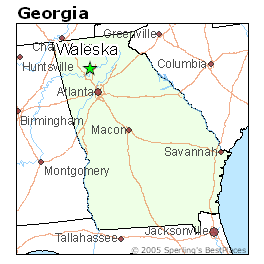
The period of removal was a frightening and humiliating time for the Cherokee of Georgia, made all the worse by the fact that they fought so hard in the courts to retain their land only to be tricked out of it by an illegitimate treaty. Understandably, the families who were able to hide their heritage, did so. I believe it was during this period that my mother’s family “lost” their Cherokee heritage. It became a secret, and once something is shrouded in secrecy, it can become a source of shame. So it was with my family.
I was a senior in high school when a friend commented on her Seminole heritage and said she could see Native American ancestry in my features. When I questioned my mother about the possibility of a Cherokee ancestor, she told me the story of a great grandmother who was a Cherokee. Maybe this explains why I always preferred playing the part of an Indian maiden in the school Thanksgiving plays. I found the Pilgrim costumes silly and felt embarrassed for the girls forced to wear them. I much preferred my pretend buckskins!
For those wanting to know more about Cherokee culture prior to the Trail of Tears, there is a wonderful living history museum in Cherokee, North Carolina. The museum and the very interesting actor I met there will be the subject of my next post, Living History: Connecting to Heritage, Part II.
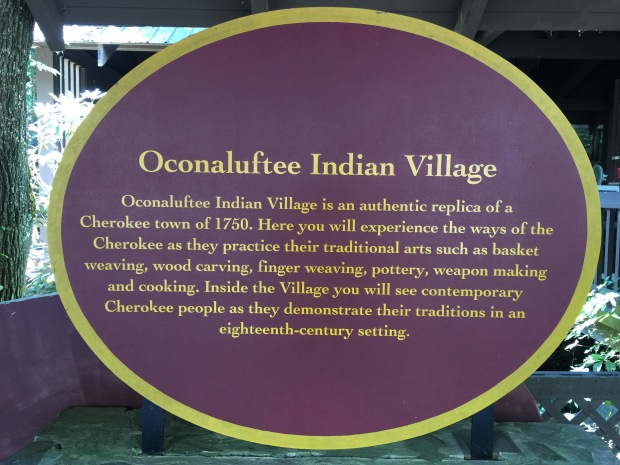
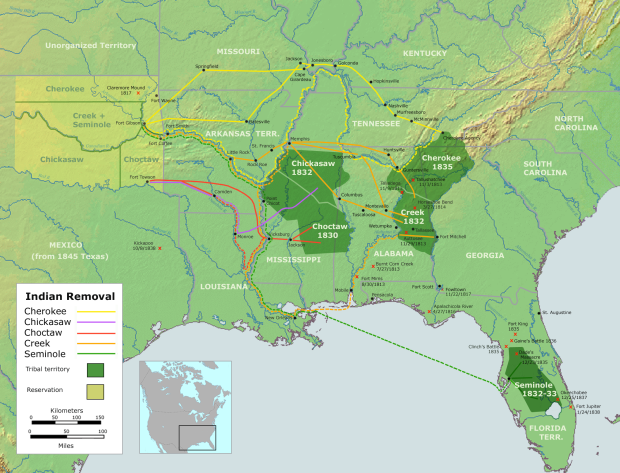

Addendum
For those wondering about why so many families have legends about Native American ancestry and take DNA tests that show none, please see this article on the validity of DNA testing for purposes of genealogy. History vs DNA testing
Notes
- http://chieftainstrail.com/sites/chief_vann_house.html, Accessed 9/25/2016.
Reblogged this on spiritofnlm.
LikeLiked by 1 person
Pingback: Living History: Connecting to Heritage, Part I | spiritofnlm
Wonderful post. I’m feeling really stupid right now that I never even thought about some people with Native American hiding their heritage to avoid the tragedies that were inflicted upon the Native Americans. It would be a great thing to have more discussions like this when learning about our history.
LikeLiked by 1 person
Thank you! I agree that discussions of the consequences of historical decisions are an important part of learning history! They have such an impact all levels of society.
LikeLiked by 1 person
Thank you for an insightful and poignant post about the need to know the past. Teachers and parents in England should read it and see why it is so important their children know about Europe’s not so distant past, and especially about the previous close relationship with certain countries such as Poland. It is horrifying to see how racism and ignorance are combining to re-create a Hitler-esque attitude to ‘foreigners’ among young people today.
LikeLiked by 2 people
Thank you, Jane. I am not sure where all of todays world issues will ultimately lead, but I do fear for our future, as well. It is more important now than it has ever been in my lifetime to have the courage of our convictions.
LikeLike
As usual, Linda, another great post. When I first was told I had native American in my heritage, I was thrilled. My ancestors had hid the fact as best they could, but I embraced it. A few years ago, I had my DNA tested, and it showed no signs of Indian blood. I was devastated, as were my other relatives living today.
LikeLiked by 1 person
Thank you, Becky. I have thought about doing the DNA testing, but just haven’t gotten around to it. So many families who have been in the New World for a long time claim Native American heritage. Mine goes so far back that it may not show up either.
LikeLike
Great article, Linda. My mom’s side of the family has always spoken of a native American heritage, so one of my cousin’s did the cheek swab through ancestry and guess what? Not a speck showed up! The next time I’m in North Carolina, I’ll check out the museum.
LikeLiked by 1 person
Thank you, BC! I have often wondered how reliable those tests actually are for small or trace heritage. If one has only one ancestor out of, say, 32 great, great, great, great grandparents, would 1/32 actually show up in the testing? I’m not sure, but there are far too many families with legends about Native American ancestry for all of them to be wrong. Given the historical prejudice against Native Americans, why would families claim heritage when it wasn’t true? I would love to know the answer!
LikeLike
Excellent post. I used to do English Civil War Reenactments with my horse. I’m part Cherokee.
LikeLiked by 1 person
Thank you for dropping by, Linda.
LikeLike
Thanks for this insightful and moving post
LikeLiked by 1 person
Thank you, Chris. I am glad you dropped by!
LikeLiked by 1 person
Always enjoy reading your blog Linda. During the adoption of my son, Ben, I was contacted by the Federal government and the tribal nations to sign off on future claims against the Cherokee and Choctaw nations by him. We learned that he is 1/70th Cherokee (LOL) and 1/70th Choctaw which we found highly amusing. In other words, in order to adopt him we had to disavow any future claims for financial compensation. So this blog is more than personal to me. Thank you for sharing.
LikeLiked by 1 person
Thank you for stopping by! In some ways, the Cherokee of Oklahoma had the last laugh when oil was discovered on their reservation. As I understand it, each member of the tribe has a claim on the royalties, so I assume that’s in part the reason for the paperwork you all had to sign.
LikeLike